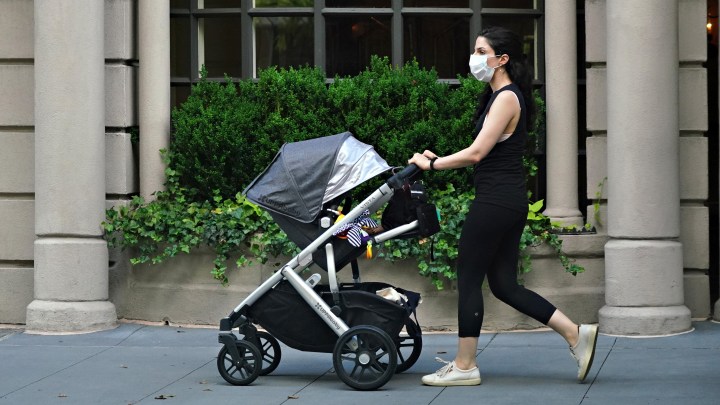
How the pandemic created an unexpected “baby bump”

When the pandemic first hit, there were a lot of predictions from economists and demographers that there would be a big drop in the birth rate — bigger than the decline that had already been happening in the U.S. since 2007.
That seemed to be coming true initially in 2020. But then over the course of 2021, the birth rate increased fairly significantly, enough to reverse two years of declines, according to new research from the National Bureau of Economic Research.
Usually, when the unemployment rate goes up, birth rates go down. That wasn’t the case in the pandemic.
“In fact, starting roughly about nine months after the pandemic, we see what we call a ‘baby bump,'” said Martha Bailey, a professor at the University of California, Los Angeles, and one of the authors of the study.
An initial drop in the birth rate in 2020 happened too early to have been caused by the pandemic affecting people’s family planning decisions, according to Bailey. “It seems like a lot of that decline was driven by reductions in childbearing to women who weren’t born in the United States,” she said.
In other words, women from other countries who might have otherwise traveled to the United States to give birth didn’t want to or couldn’t because of COVID-19.
“By the end of 2021, births for U.S. mothers were up by about 6%, relative to the pre-pandemic trend,” Bailey said.
And they were up even more among certain groups, namely: college-educated women.
“Women that maybe are more able to work from home, have more flexible work schedules, they suddenly saw what seems like a window of opportunity to start their families,” said Hannes Schwandt, a professor at Northwestern who also worked on the study.
In general, he said there are two things people tend to want to have before choosing to have kids: money and time.
“And nowadays, time is really like a very scarce commodity, especially for like highly educated women. And a little relaxation of the time constraint made a big difference,” Schwandt said.
It’s too soon to know if last year’s increase in the birth rate will just end up being a blip or the start of a longer-term trend. If it is just a one- or two-year phenomenon, it ultimately won’t matter that much, according the University of Maryland’s Melissa Kearney. Longer-term birth rate trends do matter, though.
“Economic growth depends on having a productive working age population,” Kearney said. “And so when you have a smaller working age population, income per capita can go down and our living standards can go down.”
Data from California, which the researchers found closely tracks national data, show the increase in birth rates continuing into 2022.
There’s a lot happening in the world. Through it all, Marketplace is here for you.
You rely on Marketplace to break down the world’s events and tell you how it affects you in a fact-based, approachable way. We rely on your financial support to keep making that possible.
Your donation today powers the independent journalism that you rely on. For just $5/month, you can help sustain Marketplace so we can keep reporting on the things that matter to you.











